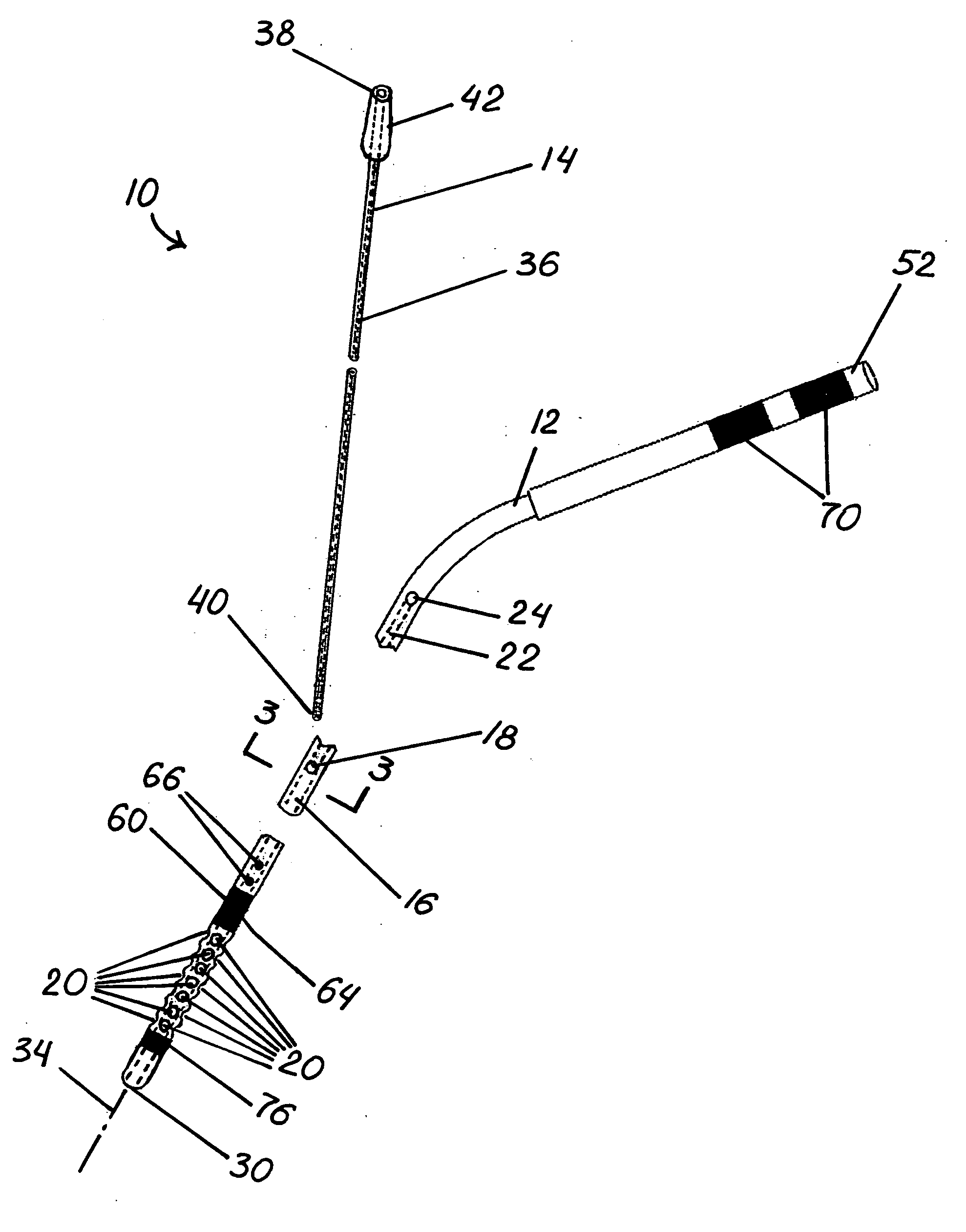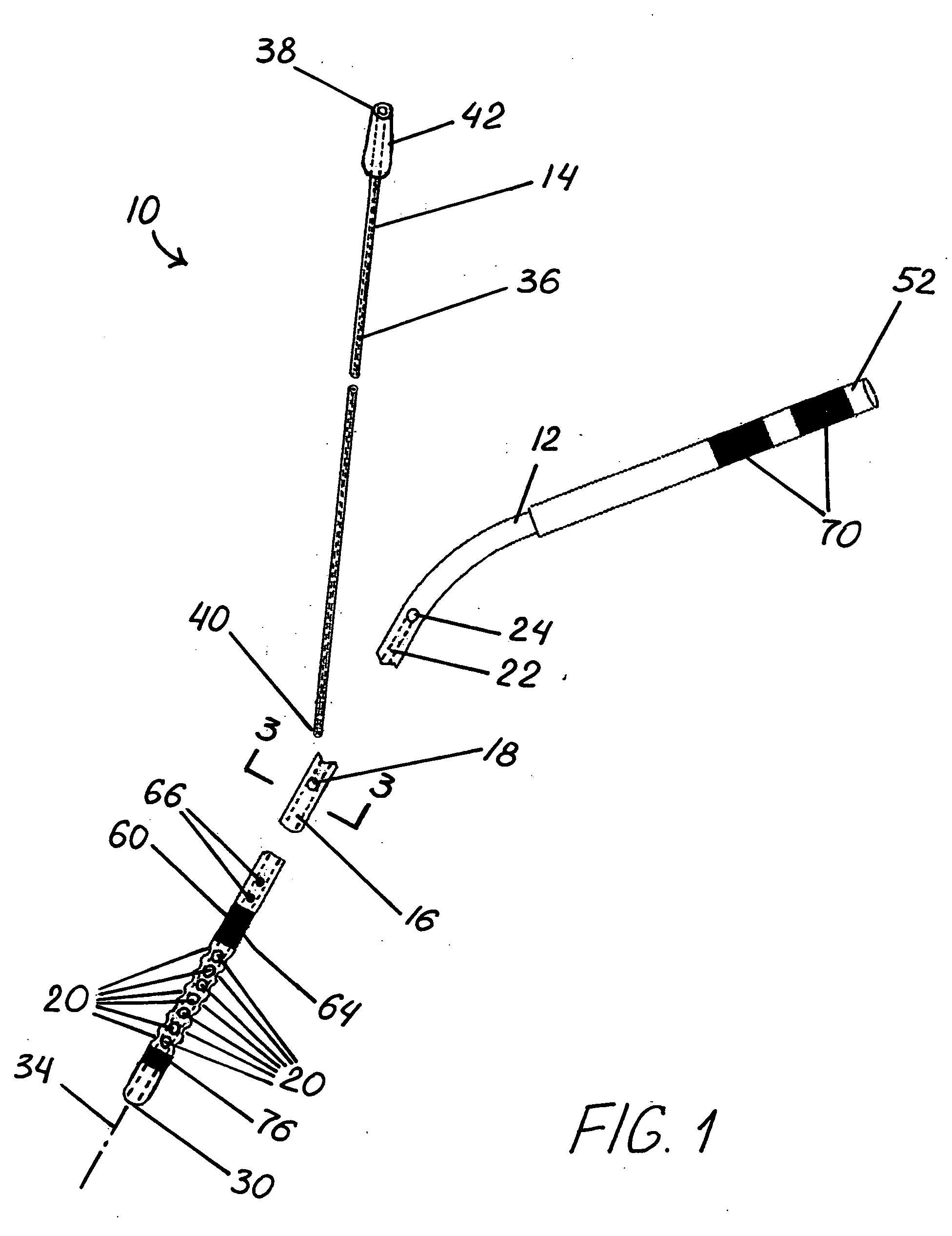Catheter assembly for intracranial treatment using dual lumens
a dual-luminescent, catheter technology, applied in the direction of catheters, applications, diagnostic recording/measuring, etc., can solve the problems of inability to precisely electrically stimulate very small volumes of the brain, patients often experience diminishing returns of such treatment, and are often delicate and difficult to insert along specific trajectories or lines of insertion
- Summary
- Abstract
- Description
- Claims
- Application Information
AI Technical Summary
Benefits of technology
Problems solved by technology
Method used
Image
Examples
Embodiment Construction
[0048] The figures illustrate preferred embodiments of an improved catheter assembly for intracranial treatment of a patient in accordance with this invention. FIG. 1 is a perspective view of catheter assembly 10 comprising of outer catheter 12 and inner catheter 14. Outer catheter 12 and inner catheter 14 cooperate to transfer fluids between a tissue region in the patient's brain and an external receptacle or device.
[0049] Outer catheter 12 is an elongated, tubular structure having a diameter preferably between about 0.6 and 3.0 millimeters, most preferably about 1.0 millimeter, and is comprised of flexible, bio-compatible materials such as polyurethane, silicone, or polyimide. As illustrated in FIGS. 1 and 3, outer catheter 12 is provided with first lumen 16 extending from first opening 18 and in communication with apertures 20. First lumen 16 is sized to receive inner catheter 14, i.e., first lumen 16 has a diameter slightly greater than the outside diameter of inner catheter 14...
PUM
 Login to View More
Login to View More Abstract
Description
Claims
Application Information
 Login to View More
Login to View More - R&D
- Intellectual Property
- Life Sciences
- Materials
- Tech Scout
- Unparalleled Data Quality
- Higher Quality Content
- 60% Fewer Hallucinations
Browse by: Latest US Patents, China's latest patents, Technical Efficacy Thesaurus, Application Domain, Technology Topic, Popular Technical Reports.
© 2025 PatSnap. All rights reserved.Legal|Privacy policy|Modern Slavery Act Transparency Statement|Sitemap|About US| Contact US: help@patsnap.com



